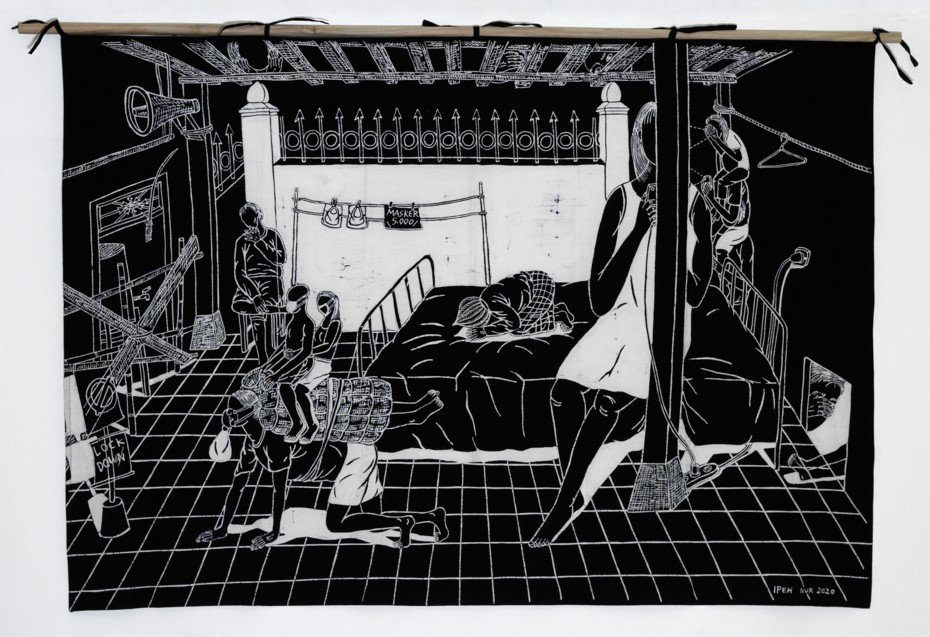Ipeh Nur
(she/her)
b 1993, Yogyakarta, Indonesia
Lives and works in Yogyakarta, Indonesia
Created during the pandemic in 2020, Ipeh Nur’s black-and-white batik drawing is one of six documenting lockdowns in the city of Yogyakarta. Although batik is typically seen as a traditional media form in Indonesian culture, Ipeh Nur’s work contains details which clue the viewer into the contemporaneity of the piece–children wearing face masks, a signpost which reads ‘lockdown’ and mobile phones, plugged into power points and clasped in the hands of the human figures. In a statement about the work, Ipeh Nur recalls a conversation with village elders held in a local diner after the government issued PSBB (Large-Scale Social Restrictions) regulations. Noting that each of the men expressed differing views, one sceptical of the severity of the virus, believing Yogya to be protected by an invisible ‘magical’ fence (pagar gaib), and another insistent that the virus was a form of divine punishment, Ipeh Nur sought to create a work that reflected the ambivalent stance and confusion of local communities as they adapted to the pandemic. The result is an unsettling portrait of suffering and survival; life and death; grief and hope; the body in confinement, and the invisible, imagined ‘fences’ which confine and preserve it.
THE CHRONICLE OF TWENTY TWENTY: Pagar 2020
hand drawn batik
110 x 150 cm
1 of 6 batiks

